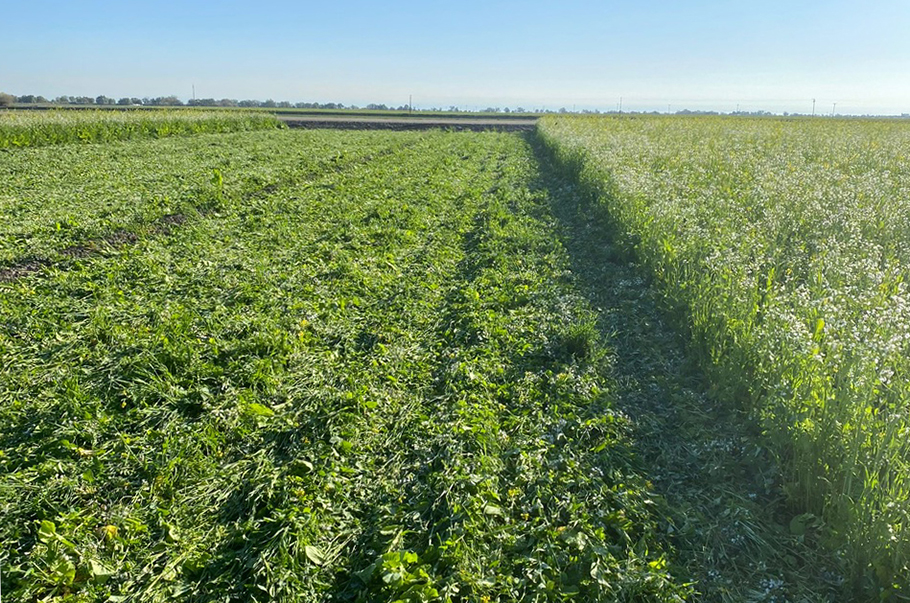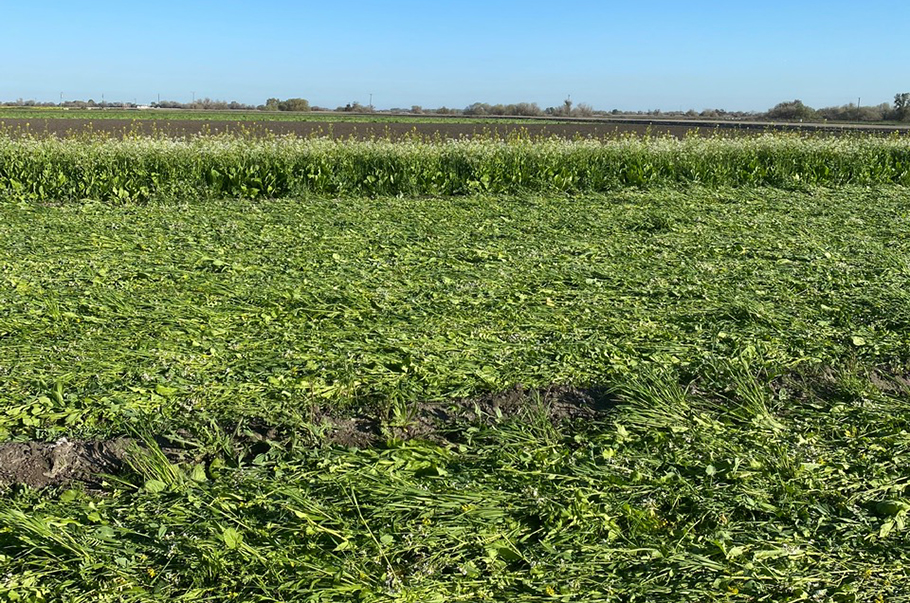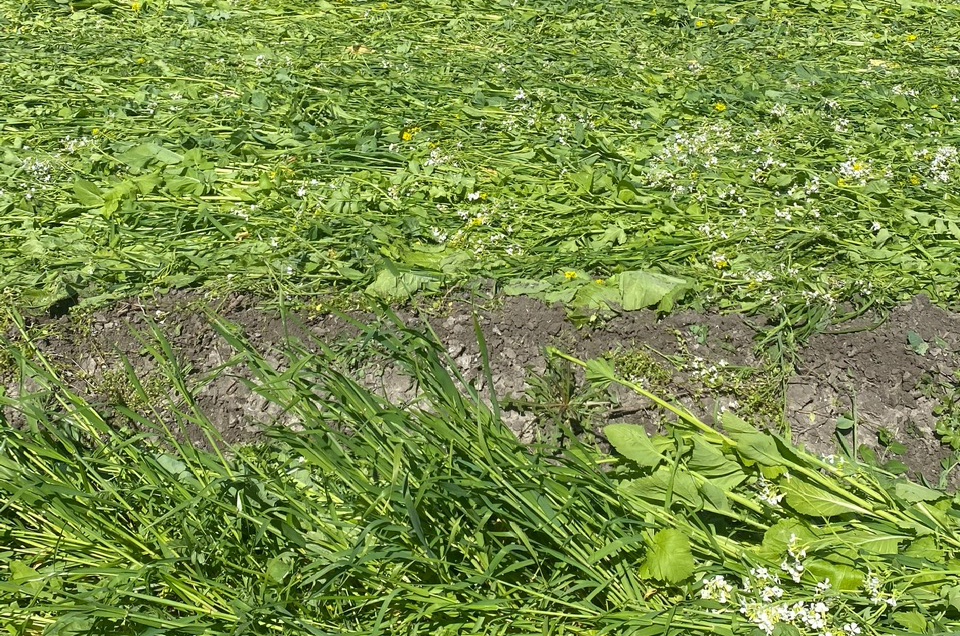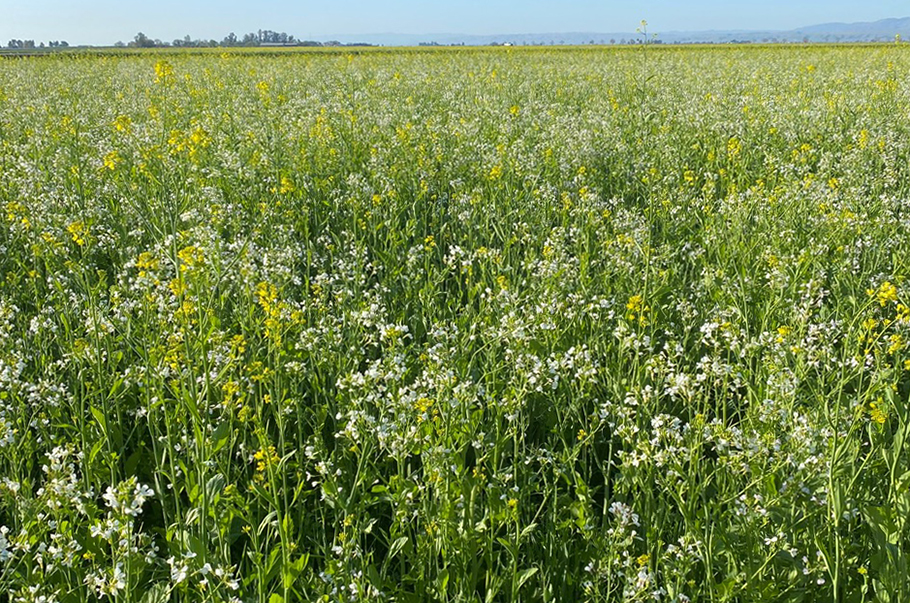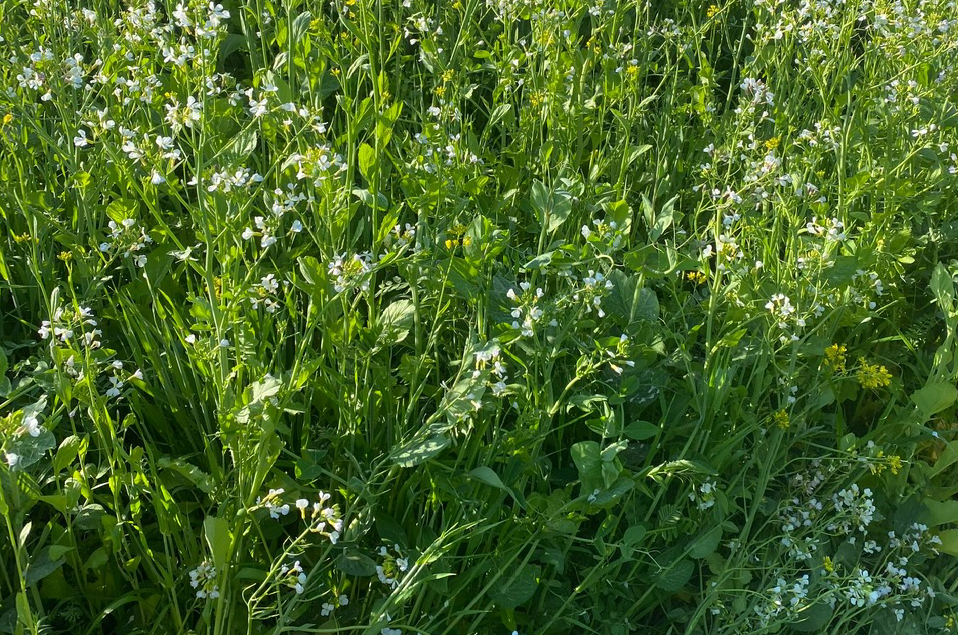
The Impacts of Cover Crops, Compost, and Minimal Tillage in Large-scale Commercial Cotton Farming
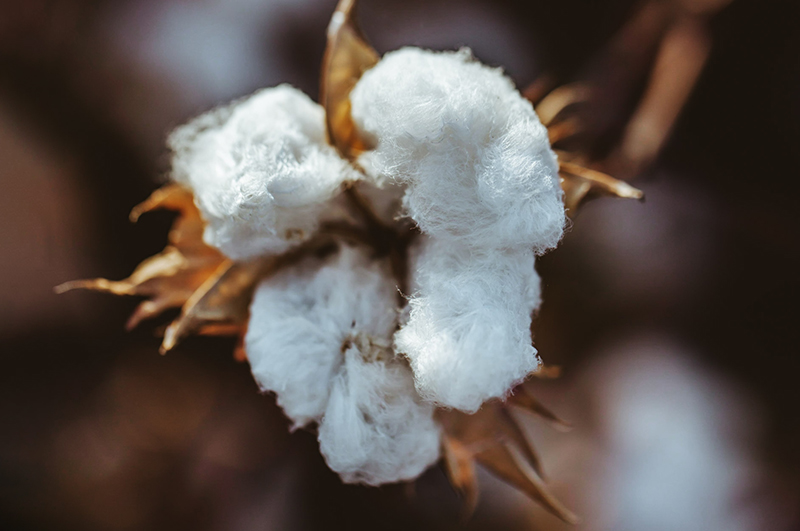
This project, funded by the Marciano Family Foundation, will study and promote regenerative agriculture in California cotton systems. The Bowles Farming Company(opens in new window) in Los Banos, CA, is a sixth generation, 12,000-acre row and broad acre crop farm whose land has been actively farmed since 1860.
California produced 250 million tons of cotton fiber in 2018, and the pima cotton grown in the State’s Central Valley is known worldwide for its staple length and tensile strength. Historically, while some of the most productive per acre domestically in terms of yield, California cotton fields are typically managed to leave ground bare for much of the year and are increasingly vulnerable to soil carbon decline, water shortages, soil erosion and soil salinization.
This three-year study will allow us to track the impacts of multispecies winter cover crops, microbial seed inoculation and compost application in the setting of a leading large-scale commercial cotton farming operation. The winter cover crop practice will incorporate minimum tillage practices between cover termination and cotton planting—a practice that is not commonly used in cotton production systems but which significantly minimizes soil disturbance and builds soil health, leading to greater water retention.
Project data and outcomes will be shared with peer farmers through field days and educational outreach coordinated by the CRARS and Fibershed, while also forming the basis for critically needed data collection on these farming practices and their impacts. In addition to production data (cotton yield and quality); soil carbon, water availability and soil health monitoring; we will gather data for an economic impact analysis of the practices.
The research study will begin in the fall of 2020 and continue through the fall of 2023. Project collaborators include the CRARS, Fibershed, the National Center for Appropriate Technology (NCAT), and the Merced County University of California Cooperative Extension (UCCE).
Update March 2021
The first cover crop has come up and has been roller-crimped.

